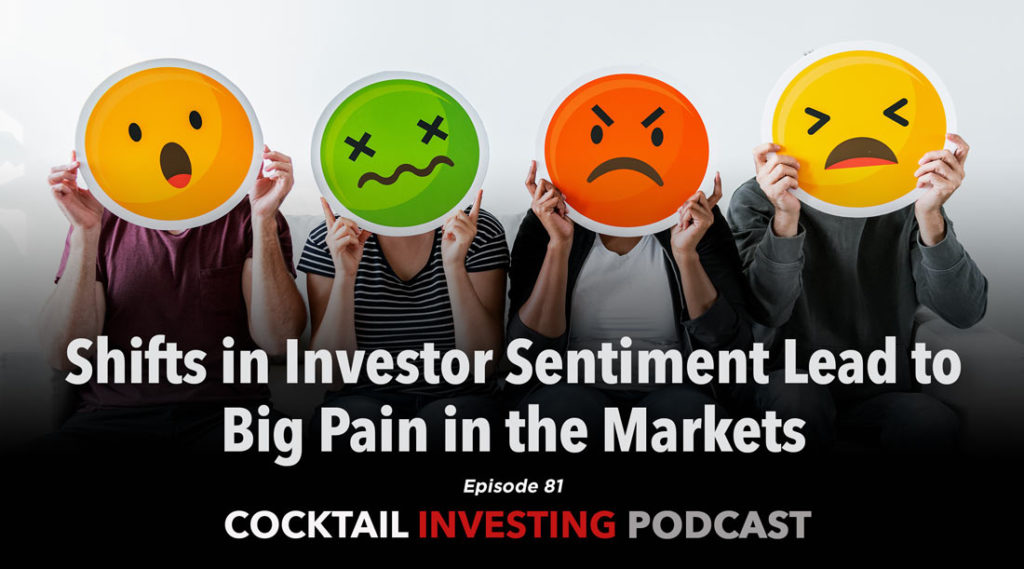Is Now the Time to Panic?
What we are currently seeing in the market is a symptom of a whole lot of leverage in equities that had been in rich territory at a time when, even though it is still moving along, signs abound that the economy is slowing. Is this a ‘buy the dip’ opportunity or is it just the start of a much bigger downturn?
It has been a stormy week from the onslaught of hurricane Michael to the sea of red in global equity markets as the market shift we have been awaiting finally took hold. Wednesday the Dow lost over 800 points and had its worst day since February. The S&P 500 has had its worst losing streak in two years with over half of the S&P 500 at least two standard deviations below their 50-day moving average – the highest such percentage since March. A full two-thirds of the S&P 500 is now down 10% or more from their respective highs – that is a broad-based decline. The Russell 2000 has blown through all support levels down through its 200-day moving average. The once high-flying NYSE FANG+ Index has fallen more than 16% from its recent highs. All 65 members of the S&P 500 Tech sector closed in the red Wednesday, something we haven’t seen since the beginning of April.
Outside the US markets have been struggling even more – the US is just starting to catch up. Germany’s DAX is down to 6-month lows, the MSCI Asia-Pac Index hit a 17-month low, the Emerging Market index hit a 19-month low and 13 of the 47 members of the MSCI all-country index are down 10% or more year-to-date. Korea hasn’t seen a decline like this in 7 years. Taiwan hasn’t seen a decline of this magnitude in over 10 years. China’s Shanghai and Shenzhen Indices are at levels not seen since 2014. For those who regularly read on commentary on TematicaResearch.com, we’ve been pointing out for months that the large outperformance of US equities versus the rest of the world was unsustainable.
The big question on everyone’s mind now is, “Is this a ‘buy the dip’ opportunity or is this just the start of a much bigger downturn and what should we expect as we head into earnings season?”
Let’s start with earnings season which is likely to see the reporting quarter’s performance decent relative to expectations, so I’m not worried about meeting target numbers. What I am worried about is investor reactions and guidance. Since mid-September 48 of the S&P 1500 companies have reported and while their results relative to performance have been solid, only 10 companies have traded higher on their earnings day and the average stock has declined 3.8% on the day. This is an acceleration of the reactions we saw from investors last quarter.
Expectations are being adjusted. Over the past month, analysts have raised forecasts for 358 companies in the S&P 1500 and lowered them for 534 which is a net of 12.2% of the index adjusted downward, the most negative EPS revision spread since March 2017. We’d warned earlier in the year that the benefits from tax cuts and the massive injection of federal spending would likely translate into weakness in the later part of the year – well, here you have it. We are no longer seeing dramatic increases in earnings estimates while corporate guidance is slowing shifting to the downside.
Looking at factors affecting forward guidance, we are seeing rising costs across a broad range of inputs – energy, tight labor markets, higher interest rates and let’s not forget everyone’s favorite ongoing trade war. Earnings season also means that one of the major buyers of equities, companies themselves, is forced to sit on the sidelines for some time.
The big picture here is that global liquidity conditions have materially changed as central banks have shifted gears in an environment that is full of extremes.
- Banks are shedding assets with several having announced layoffs in the credit loan groups as credit growth has been slowing.
- China and Japan, two of America’s largest creditors to the tune of over $1 trillion, are reducing their exposure to Treasuries at a time when the nation is running fiscal deficits typically only seen during a war or major recession with debt to GDP reaching levels not seen since World War II.
- This year the net flows into US mutual funds and ETFs is 46% below that experienced in the first three quarters of last year.
This contracting liquidity is occurring in the context of a variety of extreme conditions.
- The recent tax cuts and federal spending boon represents the largest stimulus to the economy outside of a recession since the 1960s, that at a time when the economy is already above full employment.
- We’ve seen an explosion in debt across the globe with the ratio of global debt to GDP rising from 179% in 2007 to 217% today, according to the Bank for International Settlements.
- According to S&P Global Ratings, the percent of companies considered highly-leveraged (with debt-to-earnings ratio of 5x or more) has risen from 32% in 2007 to 37% in 2017 – so much for healthy balance sheets in the corporate sector.
- Around 47% of all investment grade corporate debt is in the lowest category (BBB-rated) both in the US and Europe, versus just 35% and 19% respectively in 2007.
- Total US non-financial corporate debt as a percent of GDP is near a post-World War II high.
- The quality of corporate debt is at extreme levels as well with 75% of total leverage loan issuance in 2017 covenant-lite versus 29% in 2007.
- There was an estimated $8.3 trillion in dollar-denominated emerging-market debt at the end of 2017, according to the Institute of International Finance, accounting for over 75% of all EM debt. According to Bloomberg, some $249 billion needs to be repaid or refinanced through next year with the US dollar having strengthened considerably against their local currencies, making that debt all the more expensive.
- It isn’t just debt that is at extreme levels as the percent of household net worth in equities has never been higher.
The Bottomline on the Recent Market Turmoil
We’ve got a whole lot of leverage in the system with equities that had been in rich territory at a time when while the economy is still moving along, signs of slowing abound. Is this time to panic? Definitely not. The US stock market is getting in sync with what has been happening with yields, what is going on outside the US and with more realistic growth prospects. Both myself and Chris Versace, Tematica’s Chief Investment Officer, will be examining and re-examining thematic signals identify well-positioned companies in light of our 10 investing themes. This means being on the lookout for confirming data points that give comfort and conviction for positions existing Thematic Leader positions and opportunities to scale into them at better prices. It also means building a shopping list of thematically well-positioned companies to buy at more favorable prices.
This means asking questions like “Where will the company’s business be in 12-18 months as these tailwinds and its own maneuverings play out?”
A great example is Amazon (AMZN), which our regular readers know continues to benefit from our Digital Lifestyle investment theme and the shift to digital shopping, as well as cloud adoption, which is part of our Digital Infrastructure theme and with its significant pricing power, our Middle-Class Squeeze theme which focuses on the cash-strapped portion of the population. And before too long, Amazon will own online pharmacy PillPack and become a key player in our Aging of the Population theme. Amid the market selloff, however, the company continues to improve its thematic position. First, a home insurance partnership with insurance company Travelers (TRV) should help spur sales of Amazon Echo speakers and security devices. This follows a similar partnering with ADT (ADT), and both arrangements mean Amazon is indeed focused on improving its position in our Safety & Security investing theme. Second, Bloomberg is reporting that Amazon Web Services has inked a total of $1 billion in new cloud deals with SAP (SAP) and Symantec (SYMC). That’s a hefty shot in the arm for the Amazon business that is a central part of our Digital Infrastructure theme and is one that delivered revenue of $6.1 billion and roughly half of the Amazon’s overall profits in the June 2018 quarter.
At almost the same time, Alphabet/Google (GOOGL) announced it has dropped out of the bidding for the $10 billion cloud computing contract with the Department of Defense. Google cited concerns over the use of Artificial Intelligence as well as certain aspects of the contract being out of the scope of its current government certifications. This move likely cements the view that Amazon Web Services is the front-runner for the Joint Enterprise Defense Infrastructure cloud (JEDI), but we can’t rule our Microsoft or others as yet. I’ll continue to monitor these developments in the coming days and weeks, but winning that contract would mean Wall Street will have to adjust its expectations for one of Amazon’s most profitable businesses higher.
Those are a number of positives for Amazon that will play out not in the next few days but in the coming 12-18+ months. It’s those kinds of signals that team Tematica will be focused on even more so in the coming days and weeks.





